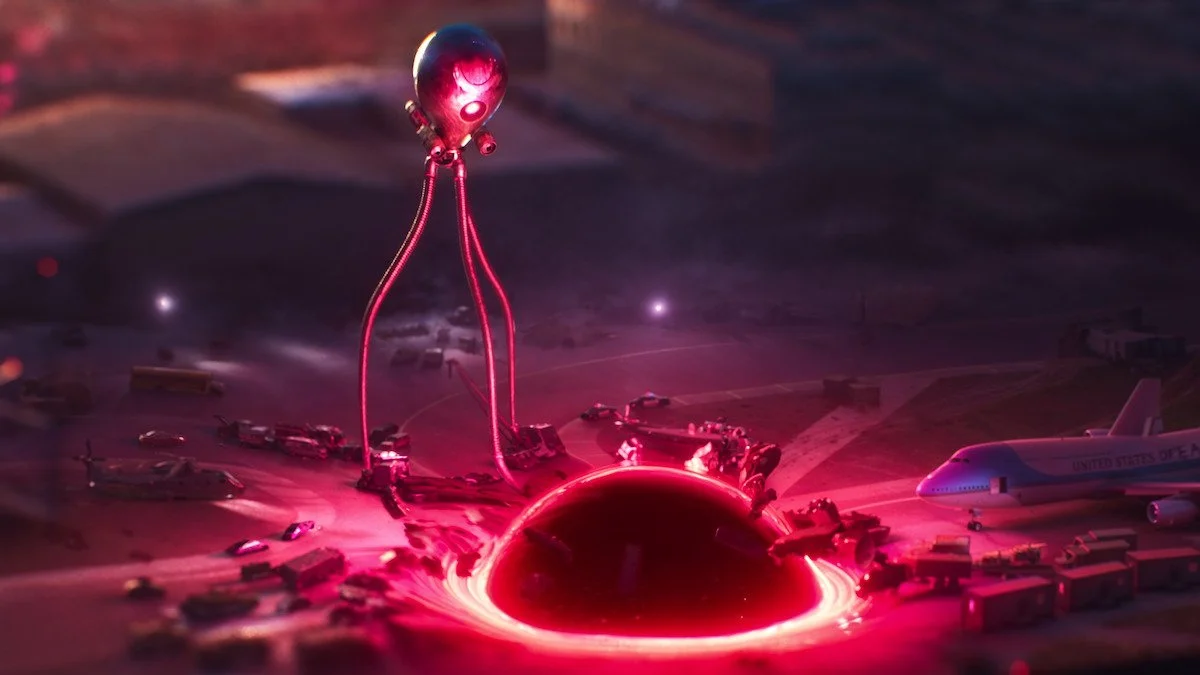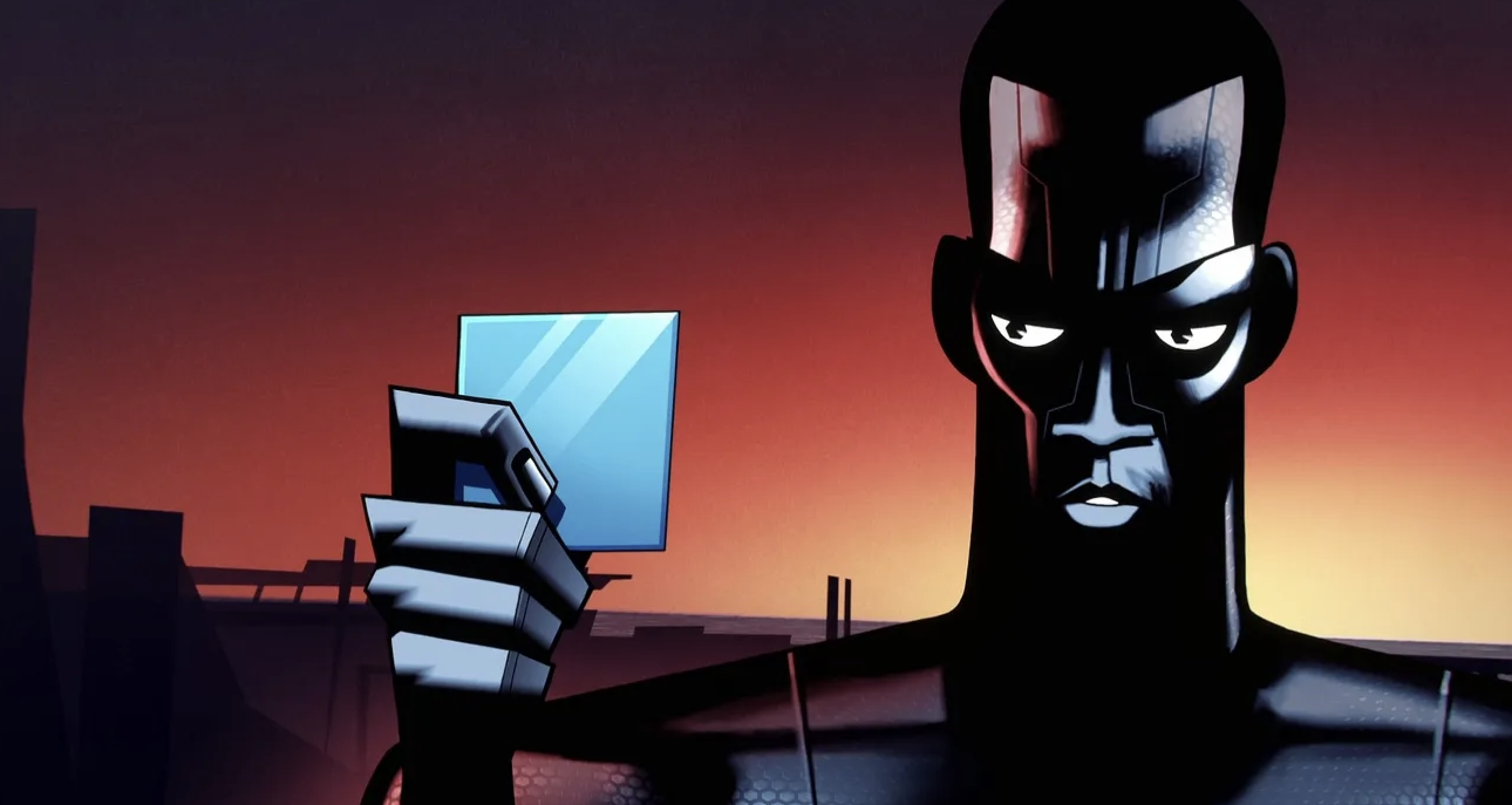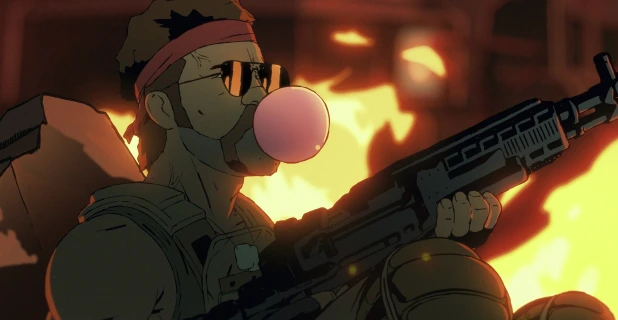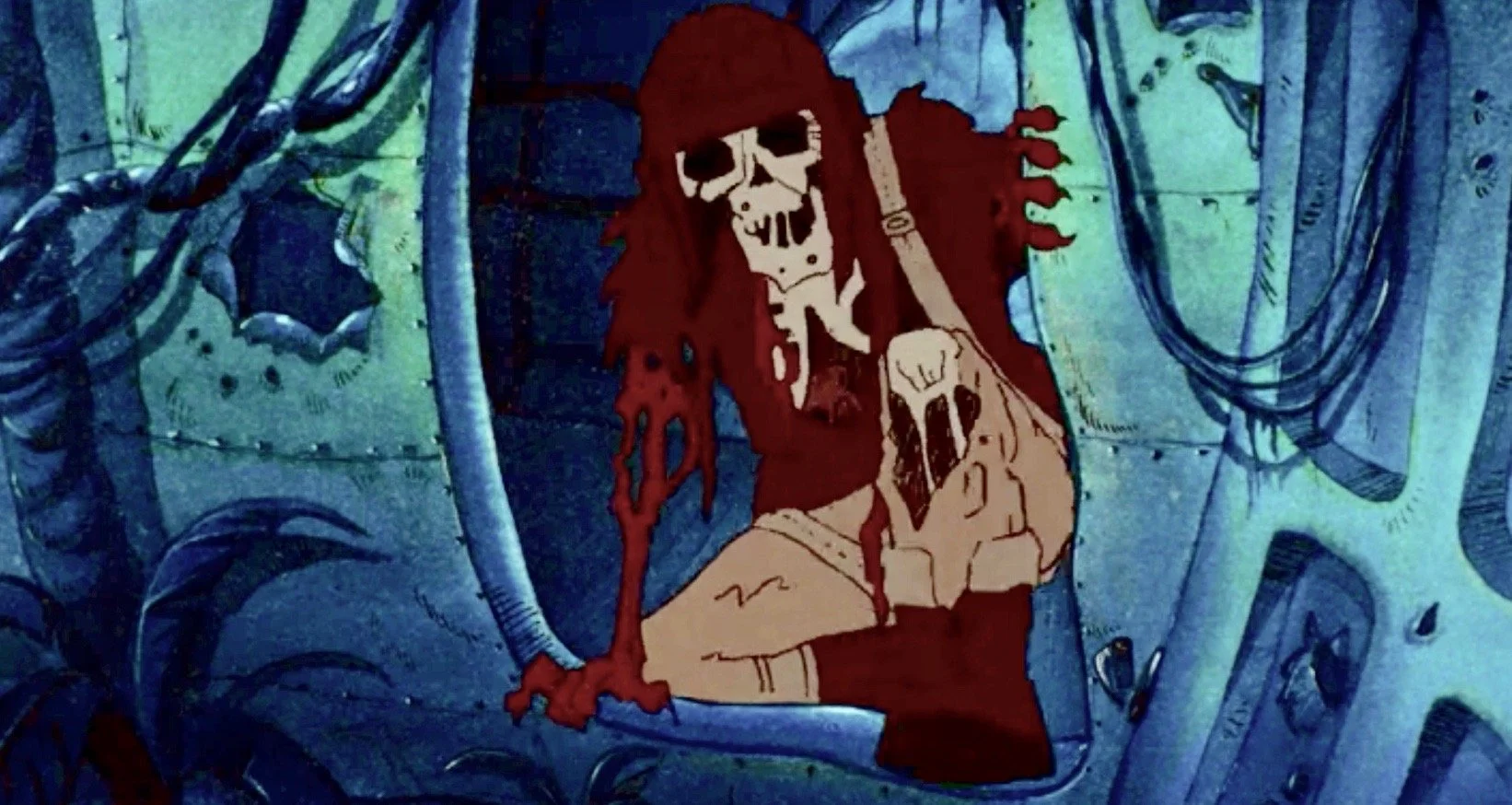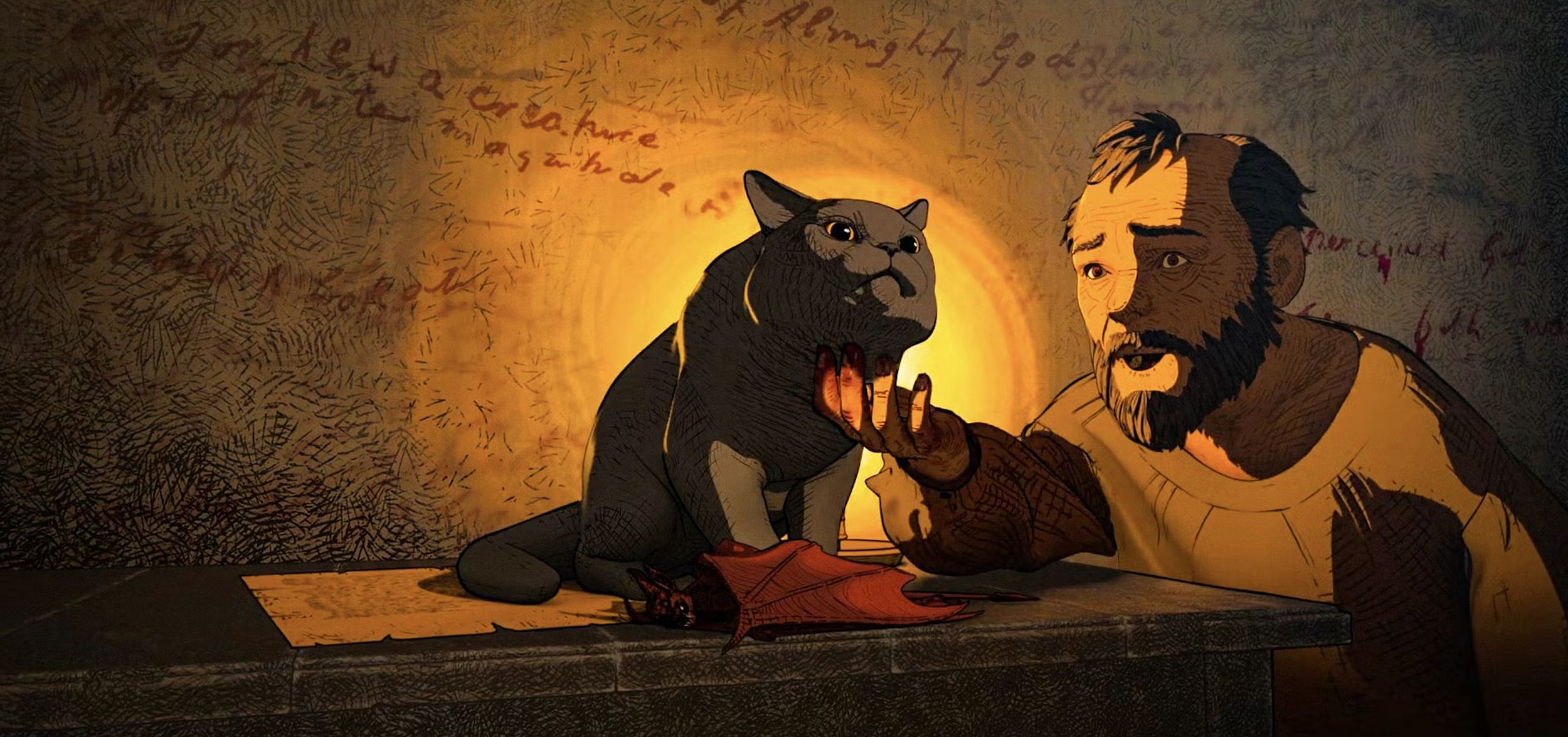Season four of Netflix’s sci-fi anthology Love, Death, and Robots dropped May 15, bringing ten new bingable stories to 2025. In previous years, stories needed to have one of the title elements and this was typically supplied with plenty of R-rated mayhem, often with gore and nudity. The series often reminds me of a modernization of 1981’s Heavy Metal, stringing together imaginative sci-fi animations with adult themes.
Like most anthologies, there is a mix of good and bad stories, but over time the series has shifted towards more solid offerings. with Season Three serving up a several excellent episodes. Although I hoped Netflix would continue this trajectory, Season Four fell a bit flat and felt a bit rushed, although there were still a few standouts. The episodes:
Can’t Stop
The first episode has nothing to do with Love, Death, or Robots, unless you count loving the Red Hot Chili Peppers as love, or perhaps consider marionettes robots. The episode is a CGI animated Red Hot Chili Peppers concert performance, except everyone is a marionette, a la Team America style. Although well-done from a computer animation standpoint, after watching it, my only question was why?
Close Encounters of the Mini Kind
Season 3’s Love, Death, and Robots included Night of the Mini Dead, a fun fast-forward zombie outbreak rendered as a tilt-shift diorama. Season 4 brings us the same approach with aliens. After an alien first contact goes disastrously wrong due to humans, well, being humans, an all-out alien invasion and human resistance unfolds at breakneck speed. A proper Love, Death and Robots episode that’s just as fun as its Season 3 predecessor. Recommended.
Close Encounter of the Mini Kind, Season 4
Night of the Mini Dead, Season 3
Spider Rose
Another proper Love, Death, and Robots sci-fi episode, this story centers on a solitary female cyborg who mans a trading station, seeking to trade for a weapon to extract retribution upon the group that killed her husband. When an alien trader arrives but refuses to trade weapons, it instead offers her a pet. The pet has a certain Lilo and Stitch quality to it, both melting the woman’s hardened heart but also containing a danger. My favorite parts were her bonding with her pet by doing things like playing zero gee fetch. The story didn’t quite stick the landing, but visually and tonally it fit right in with what I expect from the anthology, which is a good thing.
400 Boys
400 Boys is all style. I can’t explain the story itself. It’s something like “a bunch of humans with electrical telekinetic powers in a dark apocalyptic future fight giant naked evil babies that wield massive chains”. That’s pretty much it. It looks cool in the way that stylized anime fights have an intense kinetic energy, but I can’t really explain what I was watching. I will say that it’s generated a lot of discussion as to what it represents, with theories ranging to racial inequity, gang violence, or plutocracy. so I give the story credit for inviting the viewer to interpret its meaning.
From a stylization standpoint, the art reminds me a bit of Season One’s superb Zima Blue:
The Other Large Thing
“Cats are evil and plotting to take over the world” isn’t quite an original idea. The story, from the perspective of one of the evil cats, adds a twist when its human owners buy a robot to do house chores, and the robot learns the cat’s language. Soon the cat is using all of the robot’s abilities to exact its plans, including connecting to the internet to coordinate with other robots . The animation is well-done, with characters having a cartoonish look that fits the story’s tone well, and overall the episode is a good middle-of-the-road offering for a Love, Death and Robots season.
Golgotha
Golgotha is the first live-action episode in Love, Death and Robots. It’s interesting that many of the series CGI fairings have become so photorealistic that you find yourself questioning whether people are real or rendered. An example from Season 3’s Jibaro:
I had the reverse experience with Golgotha, where I greatly admired the sweating human facial animation during the first minute until I realized it was actually real. Golgotha has an Arthur Dent from Hitchhiker’s Guide to Galaxy vibe to it, with a bumbling priest chosen as the emissary to a first contact with an alien race of priests. He and the alien stroll along the beach talking about religion. The aliens themselves have a bit of a Star Trek IV: The Voyage Home setup. Overall I liked the change of seeing a live action piece. I wish there were a bit more meat to this one, as the alien conversation is over after just a few sentences, but it was enjoyable.
The Screaming of the Tyrannosaur
The Screaming of the Tyrannosaur screams of Love, Death, and Robots, with spectacular and gory action sequences. There’s also a bit of a Jupiter Ascending vibe to it.
Jupiter Ascending, 2015
To celebrate a royal union, gladiatorial games unfold with humans and dinosaurs, but one of the gladiators has her own plans to bring down the royalty. This is one of those stories that you do disservice by simply describing it as “a bunch of body-painted naked people ride triceratops to battle each other and t-rexes” because it’s wildly inventive and visually kinetic, with a satisfying ending that feels like a short story you’d read in the yearly sci-fi anthologies.
How Zeke Got His Religion
I’d mentioned how the anthology reminded me of Heavy Metal, but How Zeke Got His Religion is practically an episode from the 1981 movie, except where the 80s movie had zombies in a bomber, this has something else entirely. There’s a splash of Indiana Jones with WWII Nazis conjuring supernatural forces, but the episode is a solid and very gory hand-drawn horror. A WWII bomber, led by a mysterious occult expert, must bomb a church in the middle of the night before a horror is unleashed. When the horror is unleashed and gets inside the bomber, well, it’s horrible. The animation is beautiful and the directing flawless. It reminds me a bit of last season’s Kill Team Kill, another hand-drawn horror, in that as the monster catches up with each of the men you know that once it’s got a hold of one, the next moments will be terrible, and that just builds the anxiety as more men fall. Add in that it all takes place inside a bomber high in the nighttime sky and it’s truly the stuff of nightmares. I also admired that the supernatural monster was unlike anything you’ve seen before. At one point the men shoot it with a ship’s machine gun only to have the bullet holes rip open into dozens of mouths, like something out of The Thing. Highly recommended.
How Zeke Got His Religion, Season 4
Kill Team Kill, Season 3
Heavy Metal, 1981
Smart Appliances, Stupid Owners
Told as a series of The Office style interviews with smart appliances, this episode is a fun commentary on human behavior, with each appliance offering a bit of snark. The animation style has a claymation look, a bit like Wallace and Grommet, which fits nicely with the tone. None of the jokes are laugh-out-loud funny, but several elicited chuckles. Cheeky and fun.
For He Can Creep
Told from the perspective of the cat, the story revolves around an imprisoned poet in a medieval asylum whose only friend is a cat. When the devil becomes interested in the poet and attempts to enlist the cat to realize his nefarious plans, the cat recruits his feline friends to thwart him. Wonderfully atmospheric, illustrated, and directed, For He Can Creep is a strong choice to end the season.
